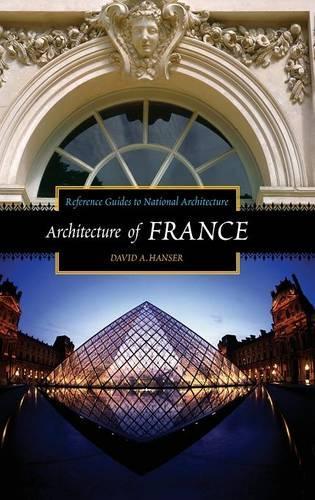
Architecture of France
(Hardback)
Publishing Details
Architecture of France
By (Author) David A. Hanser
Bloomsbury Publishing PLC
Greenwood Press
30th December 2005
United States
Classifications
General
Non Fiction
720.944
Physical Properties
Hardback
368
Width 156mm, Height 235mm
680g
Description
Covering all regions of Francefrom Avignon's Palace of the Popes to Versailles' Petit Trianonand all periods of French architecturefrom the Roman theater at Orange to the Arc de Triomphe in Paristhis volume examines more than 60 of France's most important architectural landmarks. Writing in a clear and engaging style, David Hanser, professor of architecture at Oklahoma State University, describes the features, functions, and historical importance of each structure. Besides identifying location, style, architects, and periods of initial construction and major renovation, the cross-referenced and illustrated entries also highlight architectural and historical terms explained in the Glossary and conclude with a useful listing of further readings. The volume also offers ready-reference lists of entries by location, architectural style, and time period, as well as a general bibliography, a subject index, and a detailed introductory overview of French architecture. Entries cover major architectural structures as well as smaller sites, including everything from the Cathedral of Notre Dame to Metro (subway) stations. Ideal for college and high school students alike, this comprehensive look at the architecture of France is an indispensible addition to any shelf.
Reviews
The text is enjoyable.. Hanser succeeds in keeping the book accessible to the beginner by avoiding excessive jargon, through clear explanations and a glossary an informative read for students focusing on certain grand monuments or tourists interested in the architecture of famous buildings. * Reference Reviews *
[A]rchitecture of France, perfect for college-level art history collections specializing in international architecture.[a] solid reference. * The Midwest Book Review - California Bookwatch *
Author Bio
David A. Hanser is Professor of Architecture at Oklahoma State University. He received his bachelor's and master's degrees in architecture and his doctorate in art history from the University of Illinois, Urbana-Champaign. He also studied art and architectural history at the University of Munich. From 1970 to 1980, he taught in the University of Illinois School of Architecture. program in Versailles, France. In 1980, he moved to the School of Architecture at Oklahoma State University, where he heads the architectural history and theory division and teaches architectural and urban design. In 1981, he organized and has since directed the School's European summer program headquartered at Versailles.
